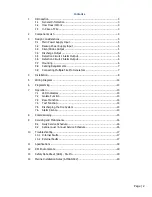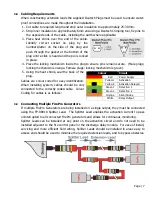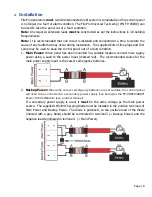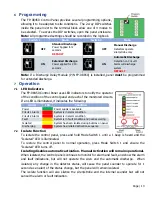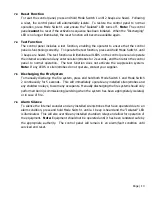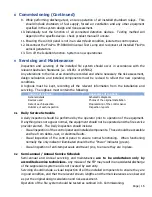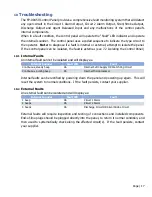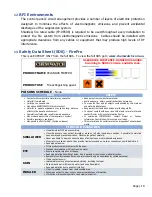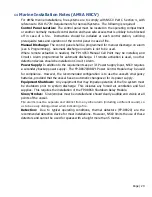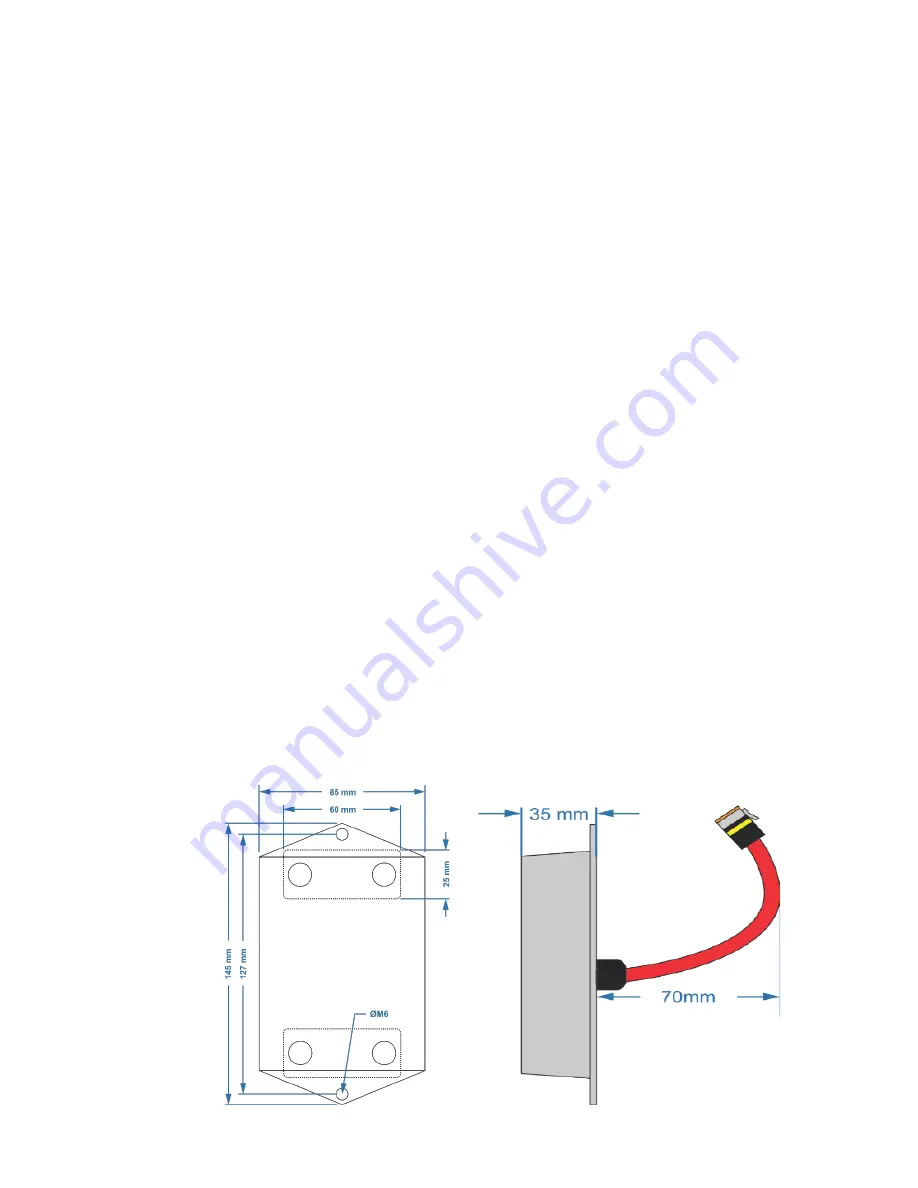
Page | 6
3.5
Detection Circuit 1 Alarm Output
The Circuit 1 Alarm Output is a zoned detection circuit capable of operating up to 30
conventional detectors, 100 metres of linear heat detection cable or 30 manual call points.
The Circuit 1 Alarm Output can be programmed for detection and alarm, or for automatic
discharge if an alarm is detected on this circuit (see 6. Programming).
Where remote actuation is needed, the FP-14053 Manual Call Point may be installed, and
Circuit 1 Alarm programmed for automatic discharge.
Note:
If remote activation is used, no
other detection devices should be installed on Circuit 1 Alarm.
The supplied end-of-line resistor (4k7
Ω) must be installed on the last detector or manual call
point in the circuit, otherwise the fire control panel will display a fault. If detection is not used,
the supplied end-of-line plugs (marked green) must be connected to the Circuit 1 Alarm output.
3.6
Detection Circuit 2 Alarm Output
The Circuit 2 Alarm Output is a zoned detection circuit capable of operating up to 30
conventional detectors, 100 metres of linear heat detection cable or 30 manual call points.
The Circuit 2 Alarm Output is a detection and alarm circuit only. When in alarm condition the
siren/strobe will operate, however the suppression system will not discharge until manually
operated.
The supplied end-of-line resistor (4k7
Ω) must be installed on the last detector or manual call
point in the circuit, otherwise the fire control panel will display a fault. If detection is not used,
the supplied end-of-line plugs (marked green) must be connected to the Circuit 2 Alarm output.
3.7
Mounting
For correct installation, the Fire Control Panel must be mounted by bolts or screws through the
mounting holes in the flange on both sides of the Module.
No penetrations are to be made
through the casing of the panel.
The Fire Control Panel enclosure is rated IP54, so should
be installed in a convenient location, away from where it may be affected by water.
It is necessary to complete all wiring and any programming of the detection mode prior to
mounting the panel.


